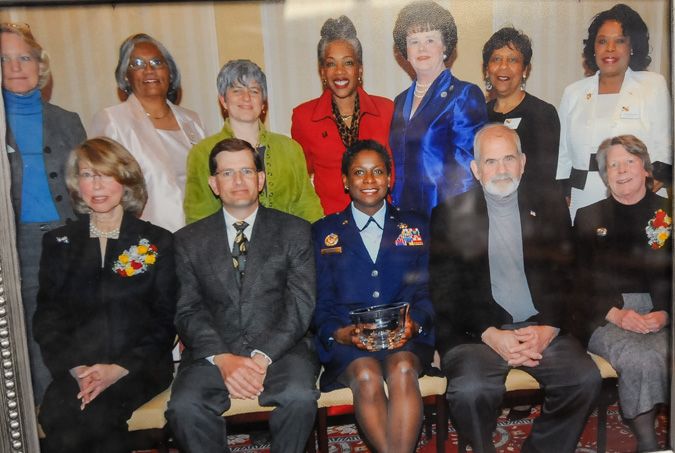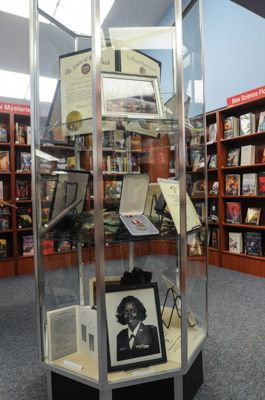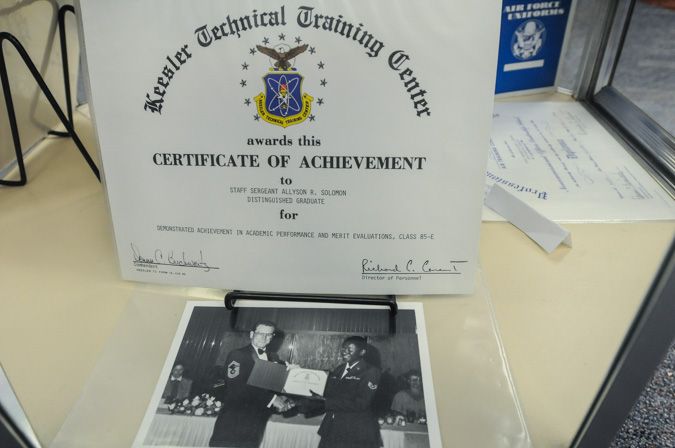BALTIMORE (Feb. 11, 2014) – The United States Army Air Forces, which became the U.S. Air Force in 1947, was home to the 332nd Fighter Group “Redtails” piloted by the Tuskegee Airmen. Until 1948 women were not to allowed to serve in the U.S. military.
On May 15, 1942, President Franklin D. Roosevelt signed the bill into law that established the Women’s Army Auxiliary Corps, “for the purpose of making available to the national defense the knowledge, skill, and special training of women of the nation.”
Fort Des Moines, Iowa, operated the first WAAC training center, and the first group of women arrived July 20, 1942; there were 565 in the group – 125 enlisted and 440 officer candidates. Only 40 of the black women who wanted to join to become officers were selected to attend the WAAC Officer Candidate School.
On July 1, 1943, the WAAC became the Women’s Army Corps and a part of the Army of the United States, a conscripted force allowed by Congress during times of war and last used during Vietnam.
As with American society at the time, the newly created WAC was racially segregated and did not extend the same benefits to women as those to which the men were entitled.
In 1948, President Harry Truman signed Executive Order 9981, stating, “There shall be equality of treatment and opportunity for all persons in the armed services without regard to race, color, religion or national origin. This policy shall be put into effect as rapidly as possible, having due regard to the time required to effectuate any necessary changes without impairing efficiency or morale.”
Brig. Gen. Allyson Solomon, the assistant adjutant general – Air, Maryland National Guard, is a woman who has broken many barriers and achieved many historic firsts.
Born in Trinidad and Tobago, she immigrated to the U.S. at a young age. Solomon enlisted in the Air National Guard following high school, a choice she did not think would last more than three years. Although she met with trying times, she did not let the difficulties stop her from continuing to serve.
“The squadron I enlisted to when I joined in 1979, there were three women. I was one of three and a handful of blacks in the whole squadron,” said Solomon. “It was an interesting time in 1979. Women were still new to the Maryland Air National Guard.”
In 2003, Solomon became the first black female colonel in the Maryland Air National Guard; in 2008, she was promoted to brigadier general, the highest position in the Air National Guard; and she also became the first black and first female selected to lead the Maryland Air National Guard as assistant adjutant general. Later, in 2009, she was inducted into the Maryland Women’s Hall of Fame.
“Being one of a few women in an organization certainly does have its share of challenges,” said Solomon. ”There is certainly much more connection across the spectrum of race today than [there] was since when I first moved here or joined the military.”
The Women’s Armed Services Integration Act, in 1948, set the stage to allow women to serve in the military without institutionalized discrimination. However, the battle against segregation was not so easily won, especially in the Maryland Guard, despite the signing of E.O. 9981. It took many years of struggle before Service members began to change and embrace equality.
“Having been enlisted for seven years prior and going through basic training, officer training was nothing compared to that,” said Solomon. “It is the foundation of every decision I make today, because I think about Airman Basic Allyson Solomon, when I make decisions. At the end of the day, that [decision-making] impacts Airman Basic whoever.”
This look at black history within the Maryland National Guard is a part of a series. The assembly of content used in this series started in 2013.
(By Staff Sgt. Thaddeus Harrington, Maryland National Guard Public Affairs Office)





